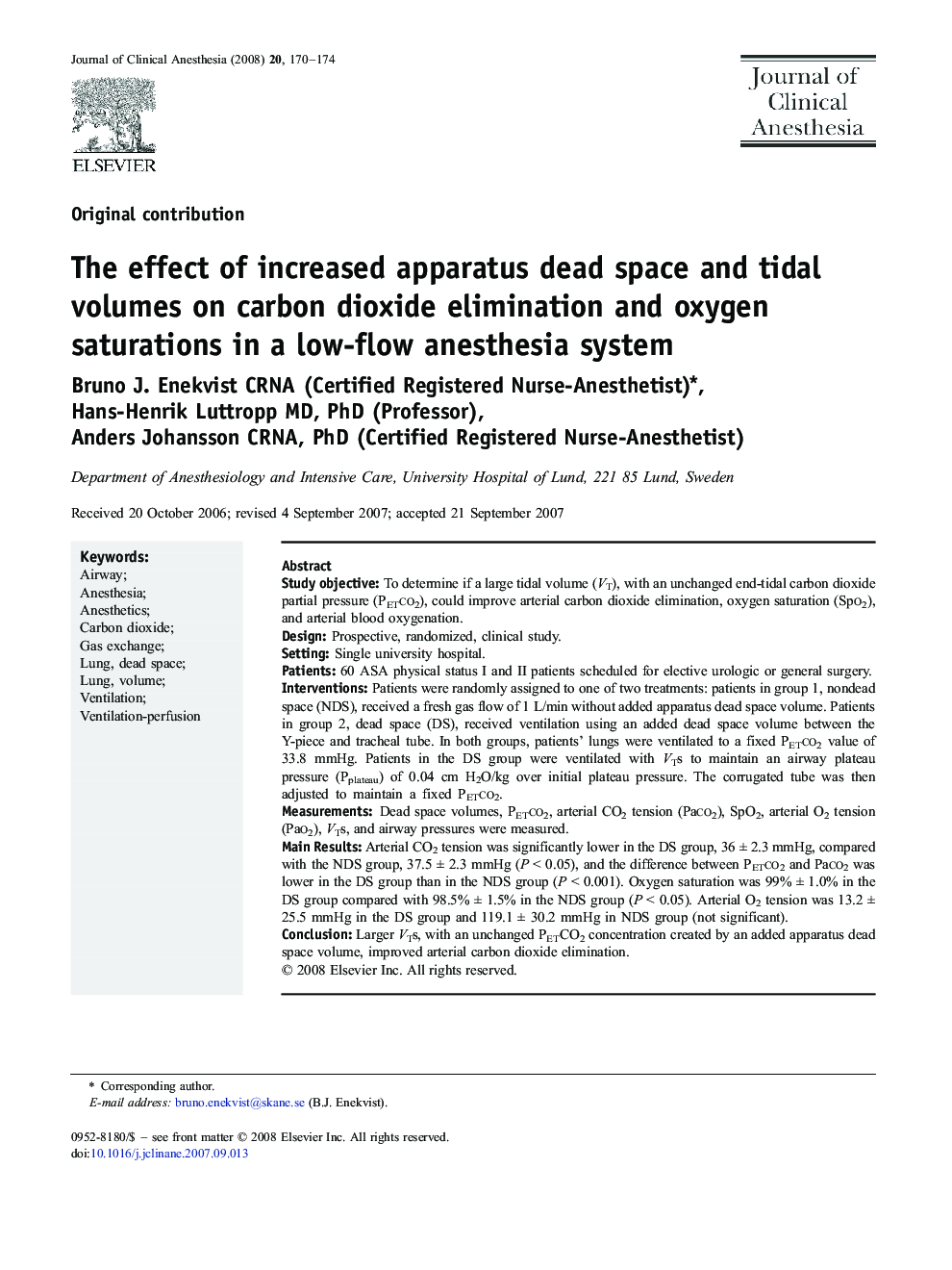| کد مقاله | کد نشریه | سال انتشار | مقاله انگلیسی | نسخه تمام متن |
|---|---|---|---|---|
| 2763576 | 1150758 | 2008 | 5 صفحه PDF | دانلود رایگان |

Study objectiveTo determine if a large tidal volume (VT), with an unchanged end-tidal carbon dioxide partial pressure (PETco2), could improve arterial carbon dioxide elimination, oxygen saturation (Spo2), and arterial blood oxygenation.DesignProspective, randomized, clinical study.SettingSingle university hospital.Patients60 ASA physical status I and II patients scheduled for elective urologic or general surgery.InterventionsPatients were randomly assigned to one of two treatments: patients in group 1, nondead space (NDS), received a fresh gas flow of 1 L/min without added apparatus dead space volume. Patients in group 2, dead space (DS), received ventilation using an added dead space volume between the Y-piece and tracheal tube. In both groups, patients' lungs were ventilated to a fixed PETco2 value of 33.8 mmHg. Patients in the DS group were ventilated with VTs to maintain an airway plateau pressure (Pplateau) of 0.04 cm H2O/kg over initial plateau pressure. The corrugated tube was then adjusted to maintain a fixed PETco2.MeasurementsDead space volumes, PETco2, arterial CO2 tension (Paco2), SpO2, arterial O2 tension (Pao2), VTs, and airway pressures were measured.Main ResultsArterial CO2 tension was significantly lower in the DS group, 36 ± 2.3 mmHg, compared with the NDS group, 37.5 ± 2.3 mmHg (P < 0.05), and the difference between PETco2 and Paco2 was lower in the DS group than in the NDS group (P < 0.001). Oxygen saturation was 99% ± 1.0% in the DS group compared with 98.5% ± 1.5% in the NDS group (P < 0.05). Arterial O2 tension was 13.2 ± 25.5 mmHg in the DS group and 119.1 ± 30.2 mmHg in NDS group (not significant).ConclusionLarger VTs, with an unchanged PETCO2 concentration created by an added apparatus dead space volume, improved arterial carbon dioxide elimination.
Journal: Journal of Clinical Anesthesia - Volume 20, Issue 3, May 2008, Pages 170–174